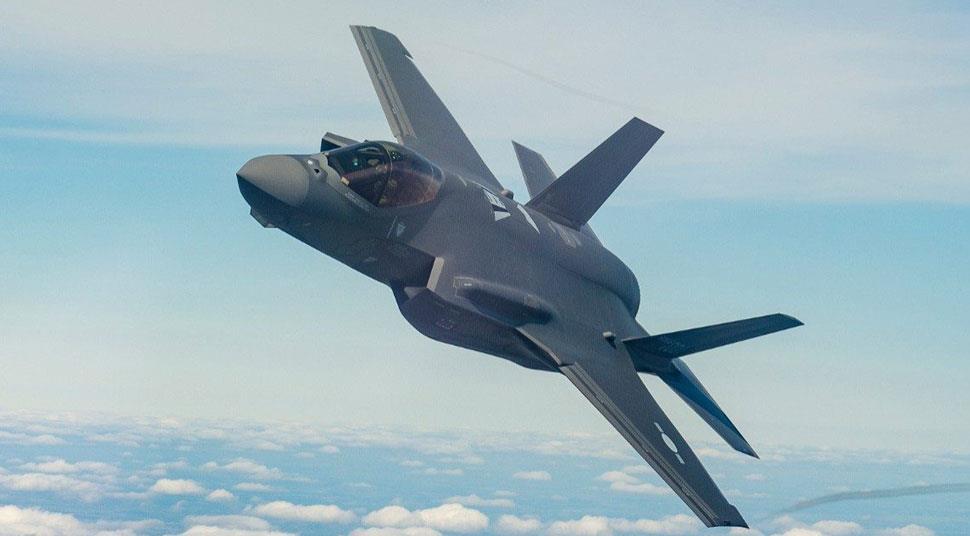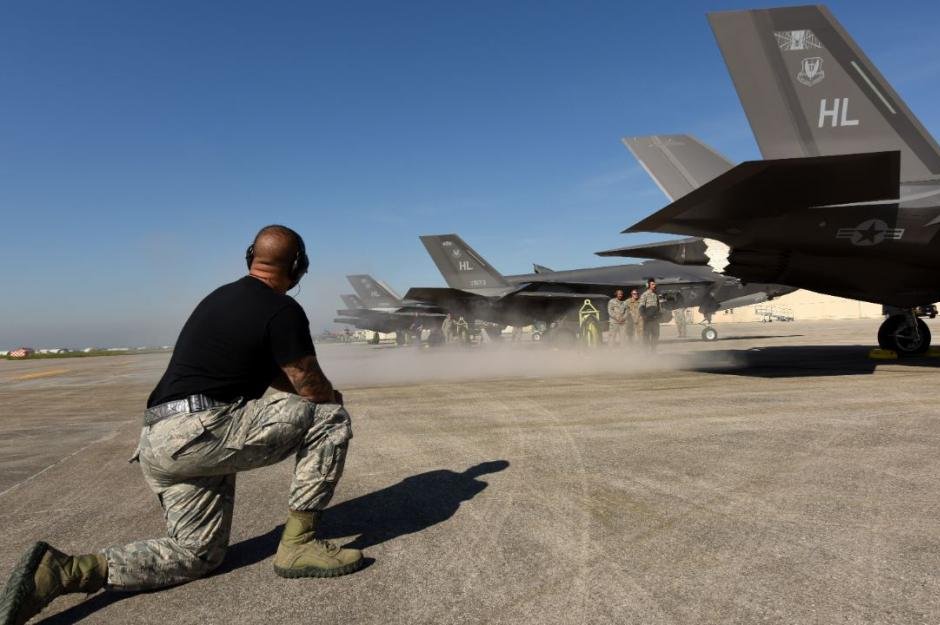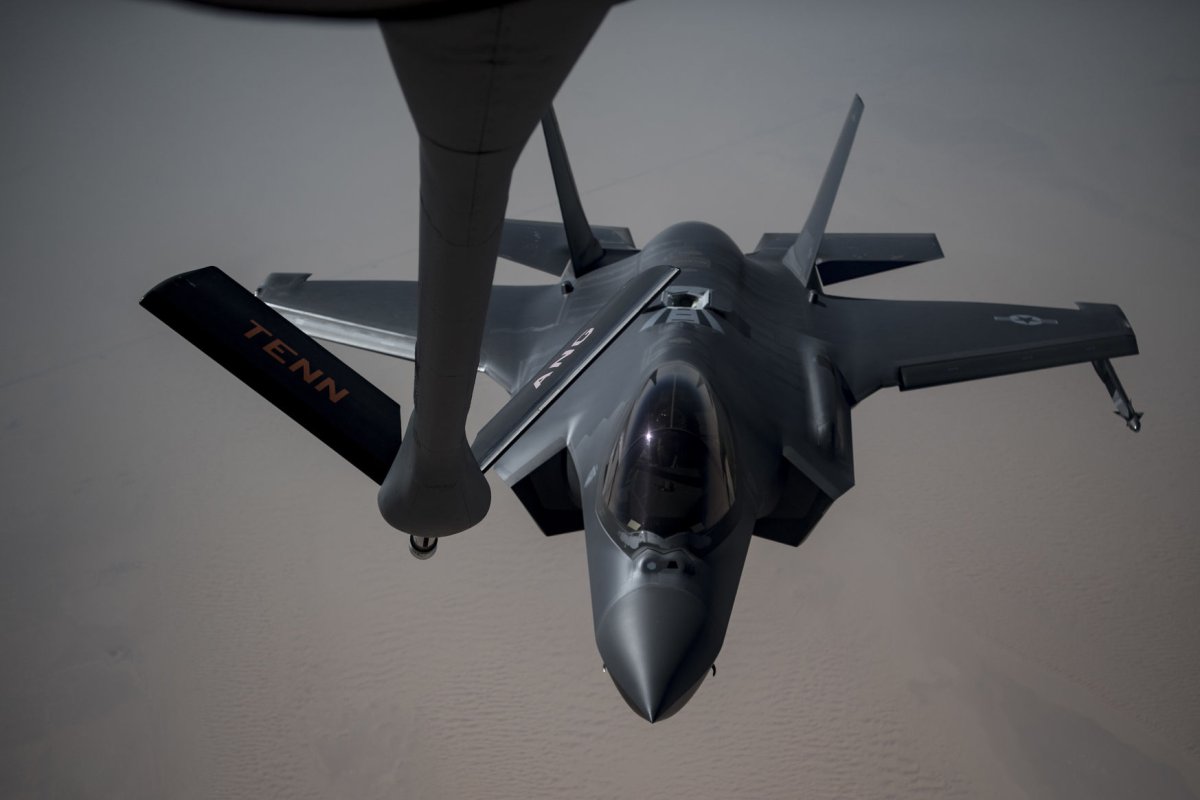The Pentagon is battling the clock to fix serious, unreported F-35 problems
By: Valerie Insinna
12 June 2019
View attachment 7981
WASHINGTON — Over the past several years, U.S. Defense Department leaders have gone from
citing technical problems as their biggest concern for the F-35 program to
bemoaning the expense of buying and
sustaining the aircraft.
But the reality may be worse. According to documents exclusively obtained by Defense News, the F-35 continues to be marred by flaws and glitches that, if left unfixed, could create
risks to pilot safety and call into question the fighter jet’s ability to accomplish key parts of its mission:
F-35B and F-35C pilots, compelled to observe limitations on airspeed to avoid damage to the F-35’s airframe or stealth coating. Cockpit pressure spikes that cause “excruciating” ear and sinus pain. Issues with the helmet-mounted display and night vision camera that contribute to the difficulty of landing the F-35C on an aircraft carrier.
These are some of the problems with the jet that the documents describe as category 1 deficiencies — the designation given to major flaws that impact safety or mission effectiveness.
Thirteen of the most serious flaws are described in detail, including the circumstances associated with each issue, how it impacts F-35 operations and the Defense Department’s plans to ameliorate it.
All but a couple of these problems have escaped intense scrutiny by Congress and the media. A few others have been briefly alluded to
in reports by government watchdog groups.
But the majority of these problems have not been publicly disclosed, exposing a lack of transparency about the limitations of the Defense Department’s most expensive and high-profile weapons system.
These problems impact far more operators than the U.S. Air Force, Marine Corps and Navy customer base. Eleven countries — Australia, Belgium, Denmark, Italy, Israel, the Netherlands, Norway, Japan, South Korea, Turkey and the United Kingdom — have all selected the aircraft as their future fighter of choice, and nine partner nations have contributed funds to the development of the F-35.
Taken together, these documents provide evidence that the F-35 program is still grappling with serious technical problems, even as it finds itself in a key transitional moment.
And the clock is ticking. By the end of 2019, Defense Department leaders are set to make a critical decision on whether to
shut the door on the F-35’s development stage and move forward with full-rate production. During this period, the yearly production rate will skyrocket from the 91 jets manufactured by Lockheed Martin in 2018 to upward of 160 by 2023.
Generally speaking, the department’s policy calls for all deficiencies to be closed before full-rate production starts. This is meant to cut down on expensive retrofits needed to bring existing planes to standard.
View attachment 7980
A maintainer with the 388th Fighter Wing out of Hill Air Force Base, Utah, checks for structural damages on an F-35A during Red Flag 17-1 at Nellis Air Force Base, Nev., on Jan. 25, 2017. (Staff Sgt. Natasha Stannard/U.S. Air Force)
The F-35 Joint Program Office appears to be making fast progress, but not all problems will be solved before the full-rate production decision, said Vice Adm. Mat Winter, the Defense Department’s F-35 program executive.
“None of them, right now, are against any of the design, any of the hardware or any of the manufacturing of the aircraft, which is what the full-rate production decision is for,” he told Defense News in an interview. “There are no discrepancies that put at risk a decision of the department to approve us to go into full-rate production.”
Nine out of 13 problems will likely either be corrected or downgraded to category 2 status before the Pentagon determines whether to start full-rate production, and two will be adjudicated in future software builds, Winter said.
However, the F-35 program office has no intention of correcting two of the problems addressed in the documents, with the department opting to accept additional risk.
Winter maintains that none of the issues represent any serious or catastrophic risk to pilots, the mission or the F-35 airframe. After being contacted by Defense News, the program office created two designations of category 1 problems to highlight the difference between issues that would qualify as an emergency and others that are more minor in nature.
“CAT 1-As are loss of life, potential loss of life, loss of material aircraft. Those have to be adjudicated, have to be corrected within hours, days. We have no CAT 1-A deficiencies,” Winter said.
Instead, the deficiencies on the books all fall under category 1B, which represents problems “that have a mission impact with a current workaround that’s acceptable to the war fighter with the knowledge that we will be able to correct that deficiency at some future time,” Winter added.
Greg Ulmer,
Lockheed Martin’s vice president for the F-35 program, said currently fielded F-35s are meeting or exceeding performance specifications.
“These issues are important to address, and each is well understood, resolved or on a path to resolution," he said. "We’ve worked collaboratively with our customers, and we are fully confident in the F-35’s performance and the solutions in place to address each of the items identified.”
The status of deficiencies
According to a June 2018 report by the Government Accountability Office, the program had 111 category 1 deficiencies on the books in January 2018. By May 24, 2018, that number had decreased to 64 open category 1 problems out of a total 913 deficiencies, according to one document obtained by Defense News.
Another document obtained by Defense News noted that at least 13 issues would need to be held as category 1 deficiencies going into operational tests in fall 2018.
The 13 deficiencies include:
- The F-35’s logistics system currently has no way for foreign F-35 operators to keep their secret datafrom being sent to the United States.
- The spare parts inventory shown by the F-35’s logistics system does not always reflect reality, causing occasional mission cancellations.
- Cabin pressure spikes in the cockpit of the F-35 have been known to cause barotrauma, the word given to extreme ear and sinus pain.
- In very cold conditions — defined as at or near minus 30 degrees Fahrenheit — the F-35 will erroneously report that one of its batteries have failed, sometimes prompting missions to be aborted.
- Supersonic flight in excess of Mach 1.2 can cause structural damage and blistering to the stealth coating of the F-35B and F-35C.
- After doing certain maneuvers, F-35B and F-35C pilots are not always able to completely control the aircraft’s pitch, roll and yaw.
- If the F-35A and F-35B blows a tire upon landing, the impact could also take out both hydraulic lines and pose a loss-of-aircraft risk.
- A “green glow” sometimes appears on the helmet-mounted display, washing out the imagery in the helmet and making it difficult to land the F-35C on an aircraft carrier.
- On nights with little starlight, the night vision camera sometimes displays green striations that make it difficult for all variants to see the horizon or to land on ships.
- The sea search mode of the F-35’s radar only illuminates a small slice of the sea’s surface.
- When the F-35B vertically lands on very hot days, older engines may be unable to produce the required thrust to keep the jet airborne, resulting in a hard landing.
The Pentagon has identified four additional category 1 deficiencies
since beginning operational tests in December 2018, mostly centered around weapons interfaces, Winter said.
“They are not catastrophic. If they were, they'd have to stop test. There's nothing like that,” he said. “They will be straightforward software fixes. We just need to get to them.”
Those four category 1 deficiencies will likely not be fixed or downgraded before the full-rate production decision, he said. Additionally, the service will likely need more time to address the F-35B engine thrust issue and the radar’s sea search mode problem. The problems that occur when the "B" and "C" models fly in excess of Mach 1.2 will not be fixed, as they are considered to have extremely low probability of occurring during operations.
All told, Winter expects to have about nine category 1 deficiencies still on the books as the F-35 moves to full-rate production: the eight problems defined above, and whatever surprises occur as the jet continues operational tests.
The good, the bad and the ugly
Defense News shared the list of deficiencies with two senior naval aviators — one active and one recently retired — who agreed to review the document. Each offered a different perspective on the seriousness of the problems.
The recently retired aviator said some of the issues jumped off the page at him, including the cabin over-pressurization issue, given the rash of over-pressurization issues in other aircraft, including the F/A-18E/F Super Hornet, EA-18G Growler and F-22 Raptor.
But perhaps the most serious for aerial combat operations is the combination of maneuvering issues when the aircraft is operating above a 20-degree angle of attack and the issue of possible structural damage and damage to the low-observable coating when using the afterburner. That coating helps provide the F-35 a stealth capability.
"The one that stood out to me was, wait a minute, you're telling me that the latest, greatest aircraft — [a] $100 million aircraft — can't perform?" the retired fighter pilot said. "It has random oscillations, pitch and yaw issues above 20A?"
However, the naval aviator currently in service said the list of deficiencies did not alarm him and that, given that the F-35 is still new to the fleet, such issues are inevitable.
“That document looks like growing pains for an aircraft that we tried to do a whole lot to all at once,” the senior aviator said. “You’re going to see that if you dig back at what Super Hornets looked like for the first few years. Go back in the archives and look at [the F-14] Tomcat — think about that with the variable sweep-wing geometry, the AUG9 radar: There was a lot of new technology incorporated into the aircraft, and there is going to be growing pains.”
Other organizations have also registered concerns about the price of fixing deficiencies.
The GAO in June 2018 warned lawmakers that moving forward with full-rate producing without fixing technical issues could drive up the cost of the F-35 program.
“If the critical deficiencies are not resolved before moving to production, the F-35 program faces additional concurrency costs to fix fielded aircraft — which are currently estimated at $1.4 billion,” the GAO stated in the report.
Winter told Defense News that the program office is taking steps to try to minimize the price of fixing the fighter jet, such as bundling in corrections to deficiencies with other software and hardware updates to decrease labor costs.
However, it is unclear how much of the cost burden will be left for the taxpayers to shoulder. The program office is recording the extra expenditures associated with fixing the deficiencies, Winter said. Ultimately, it plans to bring that data into negotiations with Lockheed in the hopes of getting the company to cover those costs.
Other watchdog organizations have criticized the deficiency litigation process for its lack of transparency. In 2018, the Project on Government Oversight blasted the F-35 program after obtaining documents that showed the Joint Deficiency Review Board downgrading 19 category 1 issues to the lower category 2 rating.
Although the Defense Department has the latitude to reclassify problems that it feels aren’t serious enough to merit the category 1 moniker, the watchdog argued that there was no fix or workaround in place for 10 of those problems.
“With the revelation that officials made paperwork fixes to make these serious deficiencies appear acceptable, it seems that much of that work is being ignored in the name of political expediency and protecting F-35 funding,”
the organization stated.
Winter pointed out that the program office does not have the power to waive or downgrade deficiencies, which can be written by the test community, operators or any other stakeholder in the F-35 program. Instead, deficiencies must be evaluated by the Joint Deficiency Review Board, which includes members from the program office, the Joint Strike Fighter Operational Test Team responsible for assessing the F-35 during operational tests, developmental testers located at Naval Air Station Patuxent River and Edwards Air Force Base, as well as other representatives from the armed services and industry.
The F-35’s list of ongoing technical problems are unlikely to pose an existential threat to the program given the recent progress in fixing issues, driving down the costs of the airframe and continued support on Capitol Hill for the fighter jet.
"I would put this down to, frankly, growing pains that you’d expect from a sophisticated, modern aircraft program. Nothing really stands out [as particularly troubling], primarily because they seem to be well on the way toward being addressed,” said Mark Gunzinger, a senior fellow at the Center for Strategic and Budgetary Assessments. “What has been done to address these have reduced the concerns regarding safety of flight. Doesn’t mean that there isn’t still work to be done. And it doesn’t mean new things won’t be discovered.”
The list of deficiencies as a whole is in some ways encouraging, the currently serving aviator said, because it looks like the issues are being identified by the engineers and technicians working on the program.
“I think what you see in that document is an airplane that fell behind schedule, that was rushed to get back up to schedule under immense political and industry pressure. They had a lot of next-gen[eration] technologies all at once, and they’re working through what all of that looks like together,” the aviator said.
“I don’t see anything in that document that makes me say: ‘Holy sh--, what did we buy?’ If the questions is, ‘Why does the aircraft have all these problems?’, I don’t know, it may sound trite, but it’s a really f--ing complicated machine.”
David B. Larter in Washington contributed to this story.
Defense News exclusively obtained documents detailing the F-35 jet's most serious deficiencies.

www.defensenews.com


 www.flightglobal.com
www.flightglobal.com


















